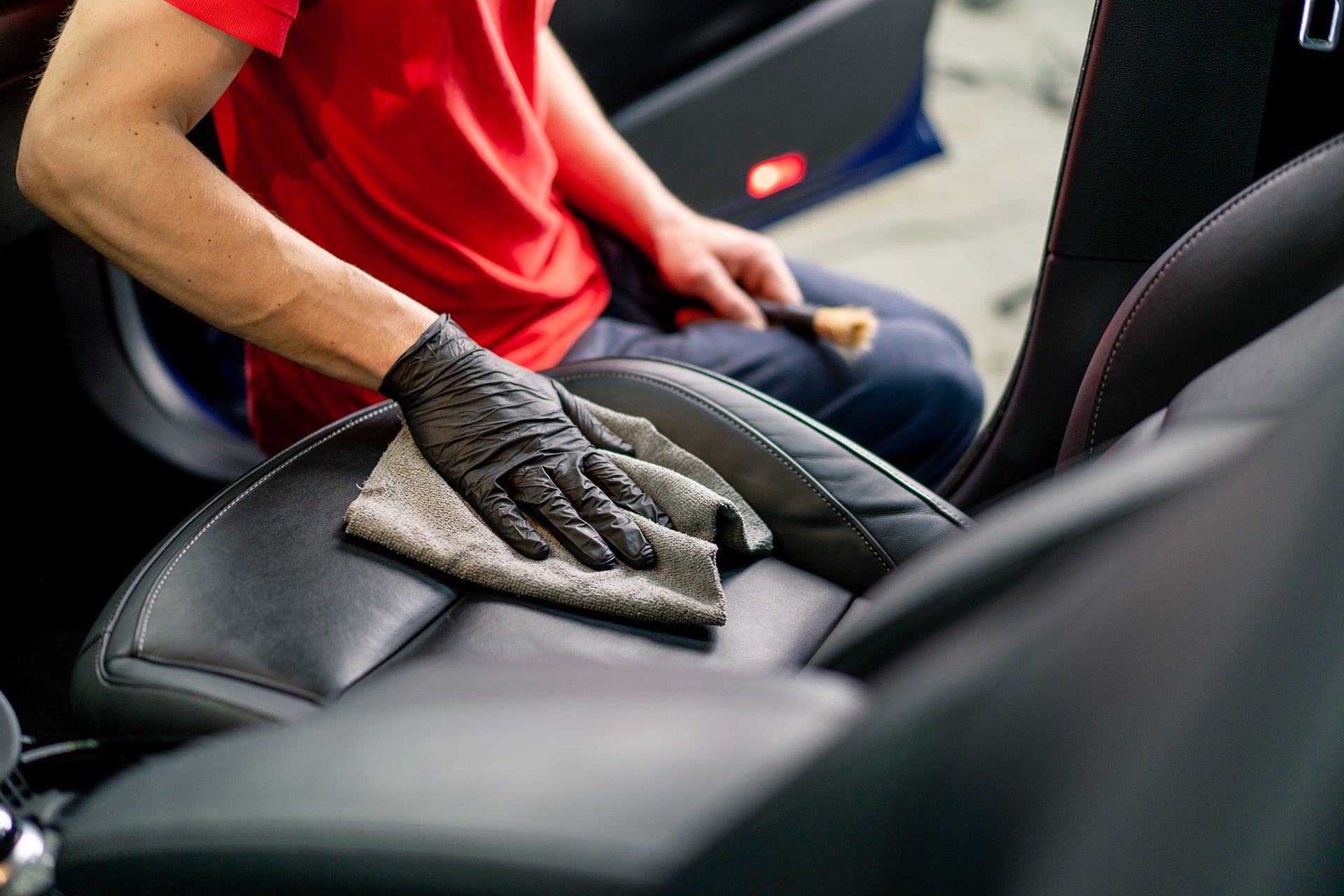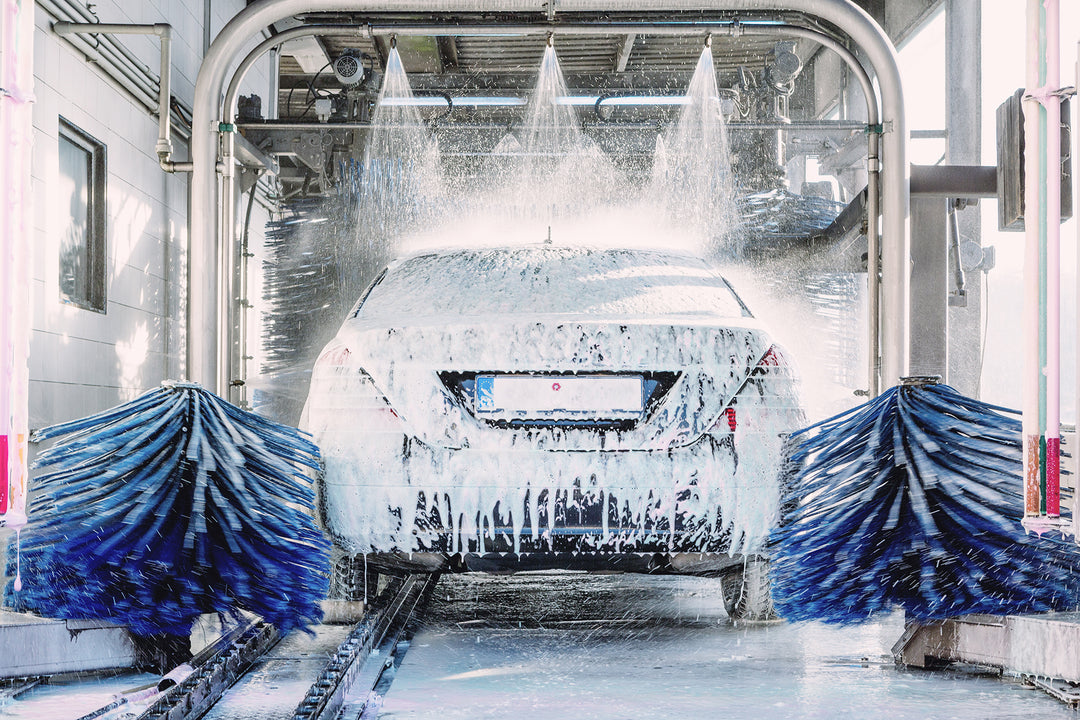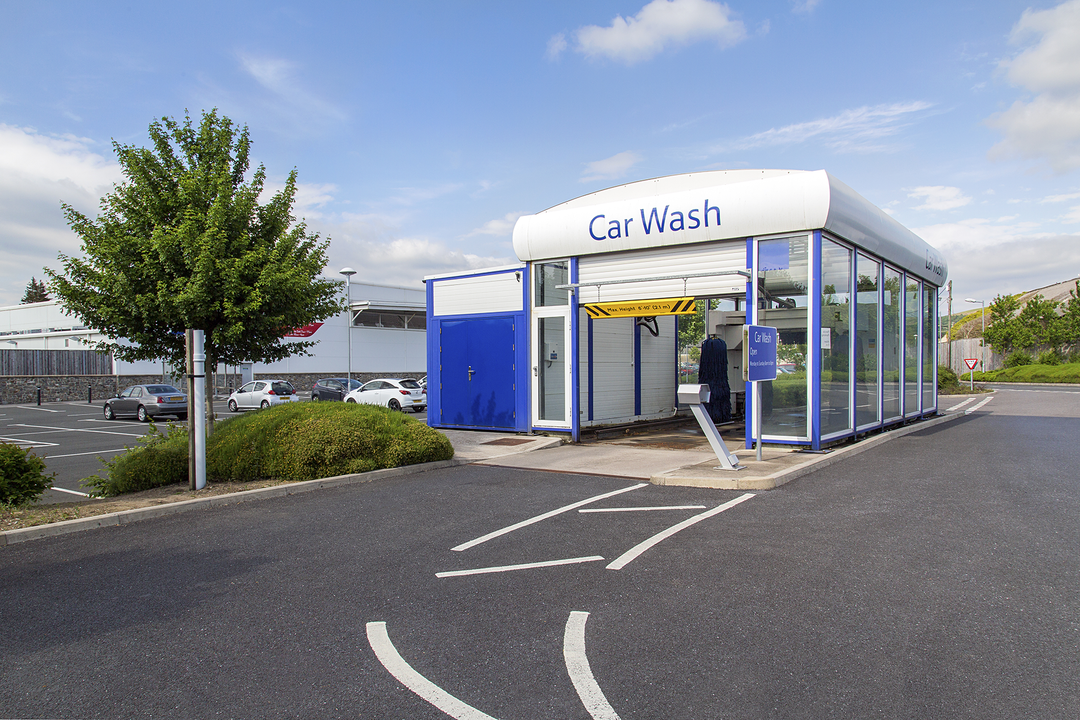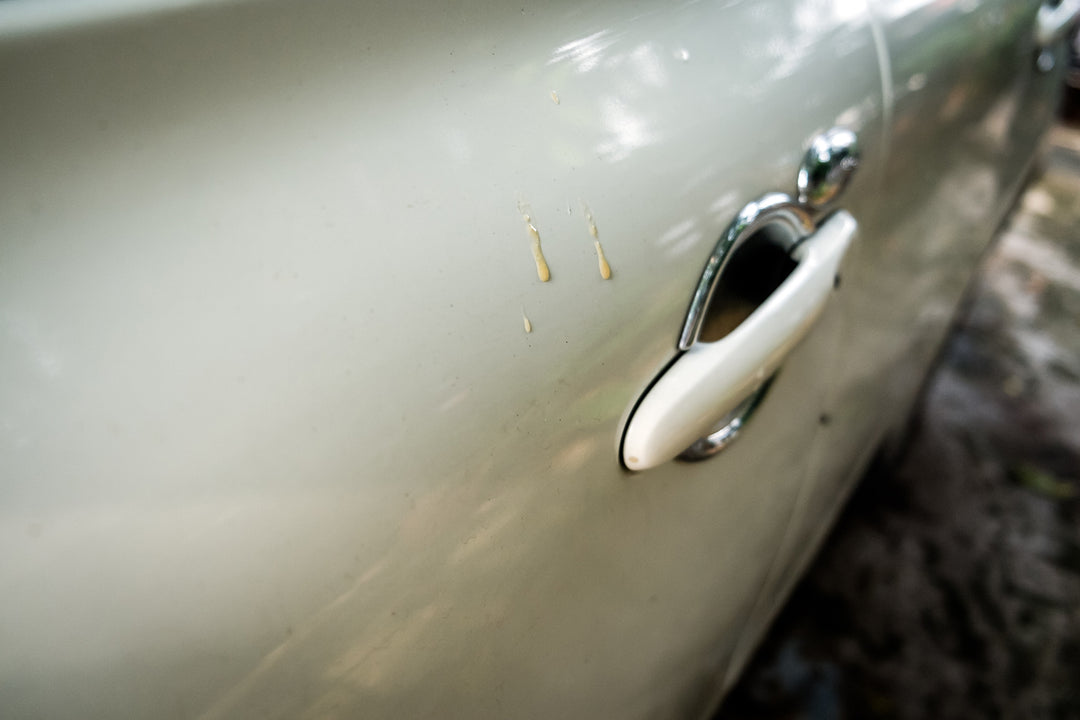Everything You Need to Know About Car Interior Detailing
- Posted on:


This guide is all about how you can do car interior detailing yourself. You'll learn about using the right tools to ensure every part of your car, including tough spots like air vents, gets clean without damage.
The Essentials of Car Interior Detailing

Car interior detailing is not just about getting rid of loose dirt; it’s about using special tools and cleaners, like steam cleaners, leather cleaners, and glass cleaners, to get rid of difficult stains and dirt. Professional car interior detailing means cleaning every little part of the interior, even places you might not see immediately, like air vents and door jambs.
The difference between detailing and just cleaning your car is huge. For example, cleaning floor mats in car interior detailing isn't just shaking them out. It might involve using a steam cleaner to get rid of deep dirt. And if you have leather seats, you use special cleaners to keep them looking new and in good shape.
Car interior detailing also helps stop your car's interior from getting worn out. Using the proper products can help protect the inside of your vehicle. For example, putting a protectant on vinyl surfaces can make them last longer.
So, car interior detailing is all about making the inside of your vehicle look and feel as good as new. It's not just cleaning; it's taking care of your car so that you’re looking after every part of it.
Preparing for Interior Detailing
Before you start the process of car interior detailing, it's essential to prepare both your car and your workspace. This preparation sets the stage for a successful and efficient detailing job. Think of it like getting ready to paint a room – you wouldn't start without first laying down drop cloths and gathering your supplies.
Steps For Successful Car Interior Detailing
The first step in preparing for car interior detailing is to clear out your car. Remove all loose items from the glove box, cup holders, and door panels. Removing these items helps you see and reach every part of your car's interior, ensuring no spot is missed during cleaning.
Next, take out the floor mats. Cleaning floor mats is a separate task, and doing this first allows you to focus on the rest of the car's interior without the mats in the way. Once the mats are out, give your car a thorough vacuuming. Vacuuming the seats, carpets, and even under the seats is excellent for removing loose dirt and debris accumulating over time.
Then, assess your car's interior to identify areas that need extra attention, like stained upholstery, dirty steering wheel, or dusty air vents. Preparing these areas for deep cleaning ensures you have the appropriate cleaner, such as a cleaner for leather seats or an upholstery cleaner for fabric seats.
Lastly, gather your cleaning supplies, including microfiber cloths, glass cleaner for windows and mirrors, a soft-bristled brush for delicate surfaces, and an air compressor to blow dust out of tight spaces. Everything at hand streamlines the car interior detailing process and helps you tackle stubborn stains and dirt more effectively.
By taking these steps, you're setting yourself up for a successful car interior detailing session. It's all about being thorough and organized, ensuring every part of your car's interior gets the attention it deserves.
Tools and Products for Interior Detailing

First, you need a good vacuum cleaner that helps remove debris and other dirt from the seats and floor mats. If you have tough stains, a steam cleaner can be helpful, especially for the seats. For leather parts, like some seats or steering wheels, you should use a leather cleaner and a leather conditioner to keep them looking nice.
Microfiber cloths are great for almost everything. They're soft, so they won't scratch your car's interior and don't leave any fuzz or streaks. When cleaning windows and mirrors, use these cloths with a glass cleaner for a clear, streak-free look. A soft brush can help clean tricky spots like air vents and around buttons without scratching them.
Tips for Selecting the Right Products
When choosing products for car interior detailing, go for those car-specific products to avoid damaging surfaces. It's also a good idea to pick different cleaners for different parts, like a gentle one for the dashboard and a stronger one for floor mats. If you have leather seats, use a cleaner meant for leather. Always read labels to ensure the product suits your car's materials. Be careful not to use too much water or soap, which can cause mold or leave soapy spots. For a selection of high-quality cleaners and other detailing tools, visit Detailing Express for all your car interior detailing needs.
Step-by-Step Guide to Detailing Your Car's Interior

- Clean the Floor Mats: First, remove and clean the floor mats separately. If carpeted, use a steam cleaner for deep cleaning and stain removal. A good scrub with soapy water for rubber mats will do the trick.
- Start the Vacuum: Vacuum the entire interior of your car. This includes the seats, floor mats, and all the nooks and crannies. A vacuum cleaner with various attachments can help you effectively reach tight spots and remove loose dirt.
- Dust and Wipe Interior Surfaces: Next, dust and wipe all interior surfaces, including the dashboard, center console, door panels, and steering wheel. Use a microfiber cloth for this, as it’s gentle and won’t damage surfaces.
- Deep Clean Upholstery and Leather: Use an appropriate upholstery cleaner for fabric seats and surfaces. For leather surfaces, leather cleaner followed by leather conditioner helps keep the leather looking good and prevents it from drying out.
- Address the Hard-to-Reach Areas: An air compressor can be handy for blowing dust out of tight spaces like air vents. You can also use a gentle, soft-bristled brush to scrub these areas.
- Tackle the Windows: Glass cleaning is next. Car and Driver notes that dirty windshields can impair vision, so keeping the windshield clean can prevent accidents. Use a glass cleaner and a fresh microfiber towel to clean all the windows and mirrors. Do this step last to avoid getting other cleaners on the glass.
- Finish with the Details: Finally, go over the entire car again with a microfiber cloth to ensure everything is clean and tidy. Don’t forget to replace the floor mats and any other items you might have removed.
Remember, regular car interior detailing keeps your car looking great but, according to Car and Driver, also helps maintain its value. With these steps, you can achieve professional car interior detailing at home.
Dealing with Common Interior Challenges

- Stains: For stains on seating surfaces or floor mats, identify what caused the stain. This will help you choose the right cleaner. A general tip is to use a steam cleaner for tough stains. Mixing dishwashing soap with warm water can work well for lighter stains. Always test your cleaner on a small, hidden area first to ensure it won’t damage the surface. If you're looking for effective stain removal products, Detailing Express offers a range of options for interior and exterior detailing.
- Odors: Odors can be tricky, but there are ways to tackle them. Experts at Arm & Hammer state that baking soda is great for absorbing smells. Just sprinkle it on the affected areas, let it sit, then vacuum it up. For a more stubborn smell, activated charcoal or air fresheners can help. But remember, it's best to remove the source of the odor first before masking it with a freshener.
- Wear and Tear: Regular maintenance is vital to deal with wear. Use protectants on the dashboard and door panels to prevent fading and cracking. Regularly apply a leather conditioner for leather seats to keep them from drying out and cracking.
- Different Materials: Every material in your car’s interior needs its care. Use leather cleaner for leather parts, upholstery cleaner for fabric seats, and a gentle, all-purpose cleaner for plastic and vinyl surfaces. Be careful not to use too much water, as excess soap and water can encourage mold growth, especially in hidden spots like under seat covers.
By knowing how to handle these common challenges, your car interior detailing will be more effective, helping to maintain your car’s interior and keep it looking good for longer. Remember, regular cleaning can prevent many of these issues from becoming more significant problems down the line.
Maintaining Your Car's Interior Post-Detailing

First, make a habit of cleaning up spills and dirt as soon as they happen. This helps prevent stains and wear, especially on seating surfaces and floor mats. Using a paper towel or clean cloth for quick cleanups can make a big difference.
Regular vacuuming of your car's interior is another critical step. This doesn't have to be as detailed as your full car interior detailing session. Still, a quick vacuum can remove dust and loose items accumulated over time. Pay special attention to areas like under the seats and the floor mats. If you notice any odors, tackle them early. Simple solutions like baking soda can absorb smells without solid air fresheners.
Lastly, give your car's interior a more thorough cleaning every few months. Professional car interior detailing can be less intense than this. However, going over the main areas like the dashboard, door panels, and seating surfaces can keep your car looking and feeling fresh.
Regular upkeep is essential for keeping your car's interior in top condition. It stops the build-up of dirt and grime, making your next entire detailing session easier and helping maintain your vehicle's value.
Synthesis and Key Takeaways
Car interior detailing is more than just a regular cleaning—it's a comprehensive approach to keeping your car's interior in its best condition. Here are the key takeaways and benefits of standard car interior detailing:
- Deep Cleaning: Car interior detailing goes beyond surface cleaning. It involves deep cleaning every interior part, from floor mats to seat belts, ensuring that even hard-to-reach areas like under the seats and AC vents are properly cleaned.
- Preserving Interior Quality: Regular detailing helps maintain the materials inside your car. Whether it's leather, fabric, or plastic, using the proper cleaning methods and products during car interior detailing helps prevent wear and tear, extending the life of these materials.
- Health and Hygiene: Regular interior cleaning contributes to a healthier environment inside your car. Removing dust, allergens, and potential mold growth ensures better air quality and a more pleasant driving experience.
- Enhanced Appearance: A well-detailed car interior looks excellent. Regular car interior detailing keeps your car looking as good as new, which can be particularly important if you plan to sell your vehicle.
- Odor Elimination: Detailing helps in effectively removing odors, leaving your car smelling fresh. Techniques like steam cleaning and baking soda can tackle even the most stubborn smells.
- Value Preservation: Regular car interior detailing can also help maintain or increase your vehicle's value over time. A clean, well-maintained interior is a crucial selling point for used cars.
In conclusion, car interior detailing is a valuable practice for any car owner. Not only does it keep your car looking and smelling great, but it also contributes to the longevity and value of your vehicle. Regular maintenance and occasional professional detailing ensure that your car remains a comfortable and pleasant space for you and your passengers.
Frequently Asked Questions
How do you detail car interiors step by step?
Detailing your car's interior is a process that involves several steps:
- Start by Vacuuming: Clean all areas, including seats, floor mats, and hard-to-reach spots.
- Clean the Floor Mats: Remove and clean them separately.
- Wipe Down Interior Surfaces: Use a microfiber cloth to clean the dashboard, door panels, and other surfaces.
- Window Cleaning: Use a glass cleaner and a clean towel to sparkle your windows and mirrors.
- Deep Clean Seats: Depending on the material, use appropriate cleaners for fabric or leather.
- Clean Hard-to-Reach Areas: Use tools like a soft brush for vents and tight spaces.
How do I prepare for interior detailing?
To prepare:
- Remove Personal Items: Clear loose items from the glove box, cup holders, etc.
- Take Out Floor Mats: Clean them separately.
- Gather Supplies: Ensure you have all the tools and cleaners, like microfiber towels, vacuum cleaners, and appropriate surface cleaners.
What equipment is needed for interior car detailing?
Essential equipment includes:
- A vacuum cleaner with attachments for different areas.
- Microfiber towels for gentle cleaning.
- Specific cleaners for other surfaces (leather, fabric, plastic).
- A soft brush for cleaning vents and tight spots.
- Glass cleaner for windows and mirrors.
Discover a variety of essential car detailing equipment at Detailing Express, where quality meets convenience.
Is interior detailing worth it?
Yes, car interior detailing is worth it because it maintains the cleanliness and appearance of your vehicle. Regular car interior detailing also helps preserve the materials inside your car, which, according to financial experts at Chase, can increase its resale value. Car interior detailing makes your driving experience more pleasant and hygienic.
These steps and tips will help you keep your car's interior in top condition, preserving its look and feel for years. Regular maintenance is vital; occasional interior detailing can enhance your vehicle's overall value and experience.





